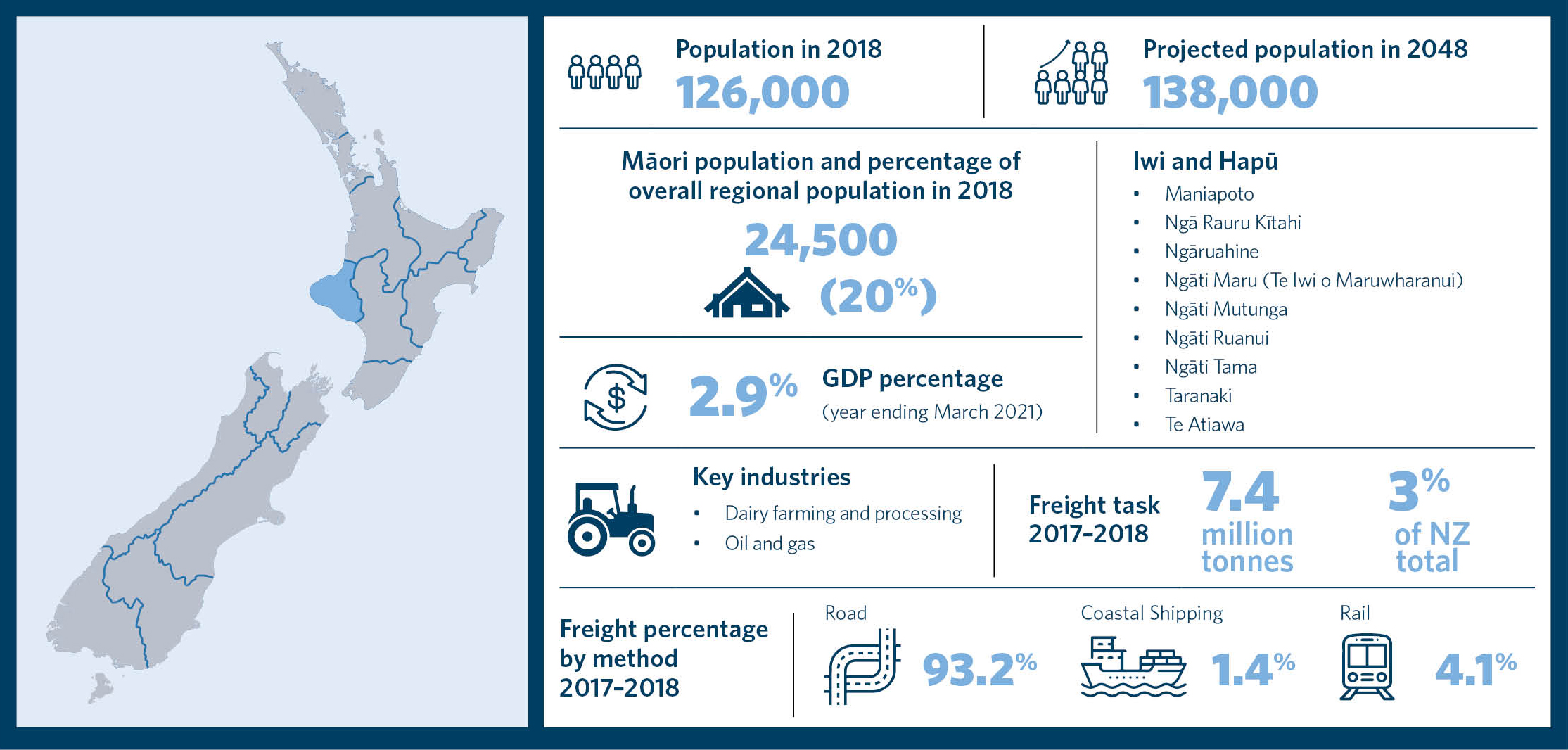
Arataki Taranaki regional direction [PDF, 2.4 MB]
Arataki Taranaki statistics table - infographic alternative [PDF, 129 KB]
The September v1.1 release of Arataki includes updates to reflect the severe weather events of 2023 and make minor corrections.
Taranaki is a highly productive region of Aotearoa New Zealand, with an economy based on the export industries of dairy farming and processing, plus oil and gas.
Taranaki relies on SH3 for safe, reliable connections to move people and freight north to Waikato and the road and rail connections southeast to Manawatū-Whanganui. There are no alternative northern routes suitable for heavy vehicles.
During the next 30 years, the population of Taranaki is expected to grow from 121,000 to 138,000 by 2048. Seventy percent of the region lives in and around Ngāmotu New Plymouth, where most future growth is projected.
With higher than average rates of walking and cycling, Ngāmotu can continue boosting active modes by investing in safe and attractive facilities. Walking and cycling are the best ways for the region to reduce vehicle kilometres travelled (VKT). Increasing the share of freight moved by rail and coastal shipping will also have an important role to play in reducing emissions.
Over the next three decades, the other critical transport challenges facing Taranaki are safety, resilience, and supporting the transition to a low-carbon economy.
For efficient and effective progress, transport challenges in Taranaki must be tackled in a cohesive way. The directions below identify the most important issues to be resolved over the next 10 years to make progress towards transport outcomes.
These will be updated over time to focus effort on the most critical matters.